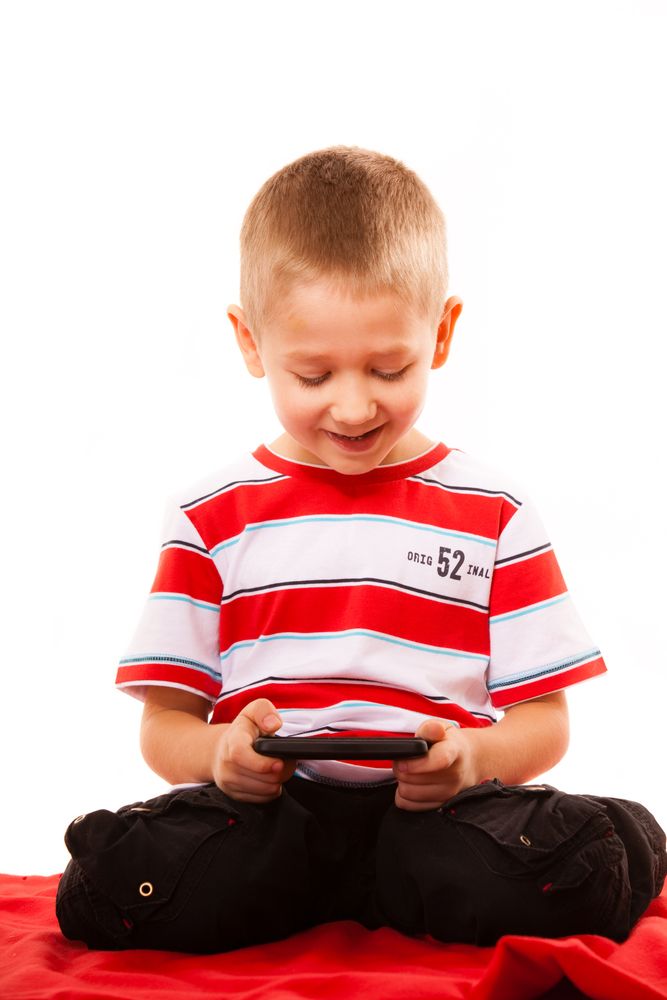Article
Pain Scale app for Kids with JIA: Feasible and Fun
There’s an app in development that could make it easier -- even fun-- for young children with juvenile idiopathic arthritis to describe where and how much they hurt.
©Voyagerix/shutterstock.com

It’s hard enough for adults to describe arthritis pain, even with the Visual Analogue Scale (VAS), but it can be especially difficult for children. Now there’s an app in development that could make it easier -– and even fun.
The new interactive app for the iPad, “This Feeling!”, is designed to help even small children with juvenile idiopathic arthritis (JIA) describe where and how much they hurt, British researchers told the 2015 annual meeting of the European League Against Rheumatism (EULAR).
In a small feasibility study, 95% of the children using the app preferred it over conventional, paper-based pain scales, reports Professor Wendy Thomson, lead researcher in Inflammatory Arthritis at the NIHR Manchester Musculoskeletal Biomedical Research Unit in the UK.
Describing pain is highly subjective to begin with, the VAS is not suited for, nor validated for use by children, and the existing pediatric Faces Pain Scale is often hard for very young children and their parents to use, Thompson says.
“Even for adults, it’s even difficult to say how much pain you have and mark it on a scale of 1-10,” she remarks. “Pain is not necessarily related to disease activity and pain episodes can be very unpredictable and therefore often poorly managed.”
The iPad app features an interactive body drawing and drawing tools. Children can choose a flashing pain signal and move it to the part of their body that hurts. They can even pick a color to shade in an area where pain expands. Along the way, kids can pick as many faces as they like (not just one) and even modify the faces to reflect their feelings. Because it’s non-verbal, even small children can use it.
To test it, Thompson and colleagues recruited 43 young people ages 5 to 16 (and their caregivers) from the Childhood Arthritis Prospective Study (CAPS) to compare “This Feeling!” to the VAS and a revised version of the conventional Faces Pain Scale. The cross-sectional study also used semi-structured interviews in an outpatient clinic.
Not only did the vast majority of the children with JIA prefer the app, but they also found it easier and far more interesting to use than paper-based pain scales, since writing can be painful. Their favorite feature: the adjustable faces. As one child remarked: “the faces are funny,” Thompson says.
The kids’ even suggested some changes, including a zoom-in feature to show the small joints of the feet and hands and even the jaw, and adding an icon representing “no pain.” Now the revised the app must be further refined and validated.
“We’re in a digital era. And young people will expect to provide information using modern technologies. In this regard, children are far more advanced than the people treating them,” Thompson told a EULAR news conference.
Widespread use of such an app is “is not only feasible, I think it’s absolutely essential. If you ask the young patients, they will tell you that the factor that makes the most difference to their day-to-day living is pain. This will help with clinical management and will also us to better assess the effectiveness of new treatments,” Thompson concludes.
References:
Tapping P, A. Rashid A, Thomson W, et al on behalf of The Childhood Arthritis Prospective Study (CAPS). "This feeling!" Can a new iPad app help children with juvenile idiopathic arthritis communicate their pain experiences? Feasibility, usability and acceptability. EULAR 2015. OP0157-HPR. DOI: 10.1136/




